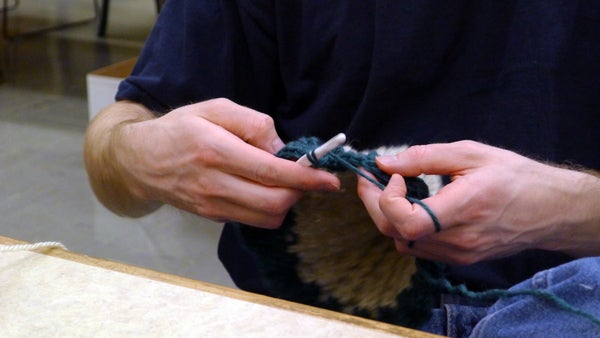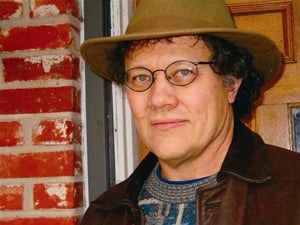Lori Hager, Ph.D., would like to make one thing clear. “I’m no expert in prison arts,” she says firmly. Yet after receiving approval for grant-funded research on prison arts programs in the United States, she may soon become one.
Hager, an assistant professor in the arts and administration program at UO, is on the research team that received a $15,000 Art Works grant from the National Endowment of the Arts (NEA) to compile a database of the history, policies, and programs of arts in prisons in the U.S. The team, comprised of lead researcher Grady Hillman, collaborator Amanda Gardner, Ph.D., and research investigator Hager, began the yearlong project in May.
 “I believe in calling attention to the really excellent work that goes on in the country and doesn’t get recognized,” says Hager. “(The work) really benefits the populations that need it.”
“I believe in calling attention to the really excellent work that goes on in the country and doesn’t get recognized,” says Hager. “(The work) really benefits the populations that need it.”
The benefits of prison arts programs are remarkable. They provide positive effects on prison manageability, improved inmate behavior, reduced incarceration rates, and offer an activity that inmates can enjoy, according to Hillman and other researchers.
“There’s a safe space created through the art-forming process,” explains Hager, who observed the prison’s “Crocheting 4 Community” group with Hillman and other UO faculty at the Oregon State Correctional Institute (OSCI) in 2011.
From knitting to poetry, prison arts programs refer to art-based workshops, projects, and courses offered in correctional facilities as a means to improve the lives of inmates. However, the U.S. still lacks a comprehensive resource that compiles the history of prison arts programs along with the research that documents the benefits of such programs. This is where Hager, Hillman, and Gardner come in.
“The database will show what we know and don't know,” explains Hillman, who carries more than 30 years of experience in adult and juvenile correctional facilities.
According to the grant proposal, the purpose of the research is to “compile resources on how the arts work in correctional settings and how they impact the lives of inmates, their families, and their communities.” By tracing existing evidence of prison arts programs in the U.S. since the 1930s, the team will create an annotated online resource for policymakers, social service workers, and those who run prison arts programs.
So what is the ultimate goal of the project?
“This should help inform current programs in terms of best practices,” says Hillman, “and will help make the case that the arts should be a part of correctional practice.”
The project will also inform the national correctional profession that the arts can be part of a good system, Hillman notes. It’s intended to be a “one-stop shop” for prison arts information that reports the positive effects the arts have on inmates and the greater community.
Hillman is a poet, linguistic anthropologist, and community arts consultant who first entered the prison arts field in 1981. Since then, he has worked in almost every state, five countries, and more than 50 correctional facilities. Hillman visited the UO in 2011 as a part of the visiting scholars series with the Center of Community Arts and Cultural Policy.
“Having (Hillman) here really called attention to a lot of different sectors and people that were interested in this work,” says Hager. “He kind of catalyzed this awareness of prison arts in general.”
Hillman, who had been collecting prison arts research for decades, contacted Hager and asked if she would like to become a partner in the grant proposal. Though the original grant request of $30,000 was cut in half, the project was approved and will conclude in April 2014.
“Lori's prestige in the field of community arts and her heft in academic research and programs provided the gravitas we needed to get this grant,” says Hillman.


Story by Cari Johnson
